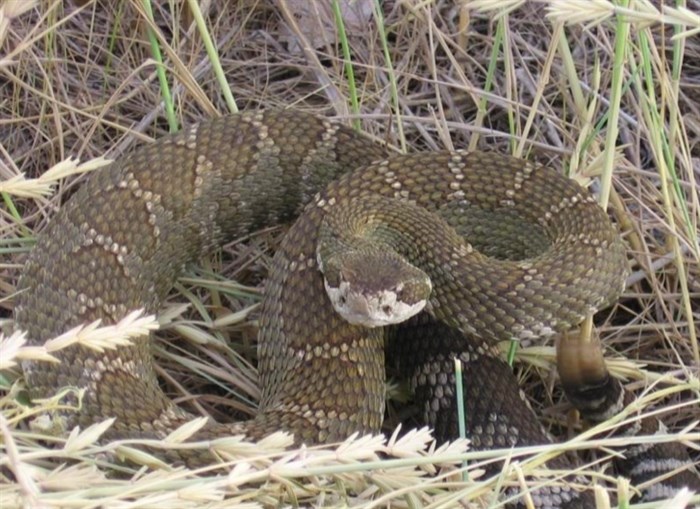
Rattlesnakes are on the threatened species list and are on the move looking for winter homes.
Image Credit: sararegistry.ca
September 21, 2019 - 6:00 AM
If you're cycling any local trails like the Okanagan Rail Trail these days you'll want to keep an eye for migrating snakes.
But it’s not just cyclists that should be careful as there are three species of snakes that are only found in the Thompson and Okanagan regions and are on the federal list of threatened species. They are crossing trails and roads right now as they look for places to hibernate for the winter.
“Part of the reason they are considered threatened is because they have such a restricted range in B.C.” Karl Larsen, a professor in the natural resource science department of Thompson Rivers University, told iNFOnews.ca. “It’s the Okanagan and the Kamloops areas that are their strongholds in the province. That contributes to them being on the list.”
The most wide ranging of the three is the Western Rattlesnake. It can grow up to a meter long and travel up to three kilometres from its den. If it’s close enough to water, it will go down for a drink.
Right now, they’re heading uphill, looking for places to hibernate.
“Rattlers typically go up to rocky cliffs and crevices where they den communally,” Larsen said. “They tend to hibernate in places that are going to dry up first in the spring and be the warmest in the spring.”
That means south facing slopes.
The Great Basin Gopher Snake, on the other hand, tends to hibernate in individual holes or just a few gathered together. They can be larger than rattlers but don’t usually travel for more than half-a-kilometre from their dens.
The Racer snake, which has just been added to the threatened species list, sometimes hibernates with rattlers but not much is known about them, Larsen said.
There is one snake in the Okanagan that has been raised to the endangered list. That’s the Night Snake, found mostly near Osoyoos.
‘It’s a very small snake. It’s very secretive,” Larsen said, noting there have been fewer than 100 sightings. “Most of the time, when people find it, it’s because they’re lifting something and finding it underneath.”
Snakes eat mice, voles and other small mammals so are crucial to balancing the ecosystem, Larsen said.
“Even a small amount of road kill is enough to steer a population toward extirpation down the road,” Lawsen said. “If a big breeding female - a few of those can have a big impact on a population.”
For more information about snakes in the Thompson-Okanagan, go here or to bcreptiles.ca.
To contact a reporter for this story, email Rob Munro or call 250-808-0143 or email the editor. You can also submit photos, videos or news tips to the newsroom and be entered to win a monthly prize draw.
We welcome your comments and opinions on our stories but play nice. We won't censor or delete comments unless they contain off-topic statements or links, unnecessary vulgarity, false facts, spam or obviously fake profiles. If you have any concerns about what you see in comments, email the editor in the link above.
News from © iNFOnews, 2019